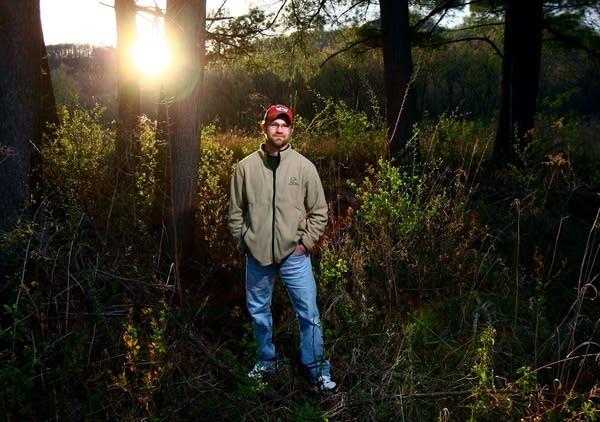Mild winter leads to healthier deer this year

When Clint Luedtke sees deer roaming Minnesota's lush forests and open pastures, he can't help but notice that they have one thing in common this year.
"These deer are fat," he said with a laugh. "They're healthy. They're definitely healthy."
That's because the ground was bare most of the winter, said Luedtke, the new landowner assistant specialist for the state Department of Natural Resources. He joined the agency a couple months ago to help landowners whose property or crops suffered damage by southeastern Minnesota's deer herd.
The mild winter means more deer survived the season in good shape. But for many farmers getting ready to plant this year's corn and soybeans, a growing deer population means more crop damage.
Create a More Connected Minnesota
MPR News is your trusted resource for the news you need. With your support, MPR News brings accessible, courageous journalism and authentic conversation to everyone - free of paywalls and barriers. Your gift makes a difference.
Luedtke came to work for the Department of Natural Resources in part to help curb summer crop damage. He could be busy helping farmers cope with healthy deer that didn't have to work hard to find leftover ears of corn, twigs and acorns they love to eat.
"They didn't have to really go searching for food," he said. "They didn't have three feet of snow to dig through. So they were able to not stress their bodies out as much as they normally would."
Less stress means the deer are going into spring in much better physical condition than normal. When does are healthy, they're more likely to have twins and triplets. Fawns can start their reproductive cycles earlier, too.

"It's going to be a surprise when we see the number of spotted deer running around come May [or] June when they start putting 'em out," Luedtke said. "So that's got us a little bit nervous with summer crop damage. We see it every year; it's just that there might be a few extra legs on the ground this year causing some of the problems."
The size of Minnesota's deer herd dropped from about 1.3 million in early 2000s to about 1 million today as a result of intensive deer management programs, said Lou Cornicelli, the DNR's big game coordinator.
But for private landowners and farmers like Bob Marg, that's still too many deer.
On a recent morning, Marg drove to the perimeter of his 345-acre property near the Mississippi River, just north of Altura. The farm includes 145 acres of tillable land and 40 acres of open pasture. The rest is woods.

When he reached the end of a long field, Marg inspected the soil where he'll plant corn and barley this year. He quickly spotted what he was looking for: deer tracks.
Marg has long been a critic of the state's deer management strategies. He thinks the problem is too many hunters go after trophy buck and not enough does. In areas with higher deer concentrations like southeast Minnesota, that often means the large population left behind eats more crops.
The crop damage is "basically when the corn is silking," he said. "The silks are high protein and they like them. So they bite the end of the silks off and then you don't get an ear, and if you do, you get about an inch nubbin. Well, then it's all loss.
Marg estimates he loses about $1,400 a year in crop damage. He recognizes that isn't a lot, but it's still money out of his pocket. Last year, Marg allowed 15 hunters on his property during deer hunting season to help manage the deer population.
"There's gotta be a balance," he said. "The buck hunters are the ones that are causing most of the problems because they don't shoot does."
Mark Johnson, president of the Minnesota Deer Hunters Association, agreed.
"The hunters need to do their job and need to take the does along with the bucks," he said.
Johnson said hunters have complained for years about how a decrease in the deer herd also cuts the number of large trophy bucks they can get. But he acknowledges deer hunters play an important role in maintaining a healthy deer population.
"That said, we want a healthy deer population," Johnson said. "And if you kill out all the does, you don't have a healthy deer population either."
Finding a middle ground between farmers and hunters is the role Luedtke will play as the DNR's new landowner specialist.
With healthier deer expected this year, he wants more farmers to let hunters on their property. He also wants to motivate hunters to start shooting more does.


